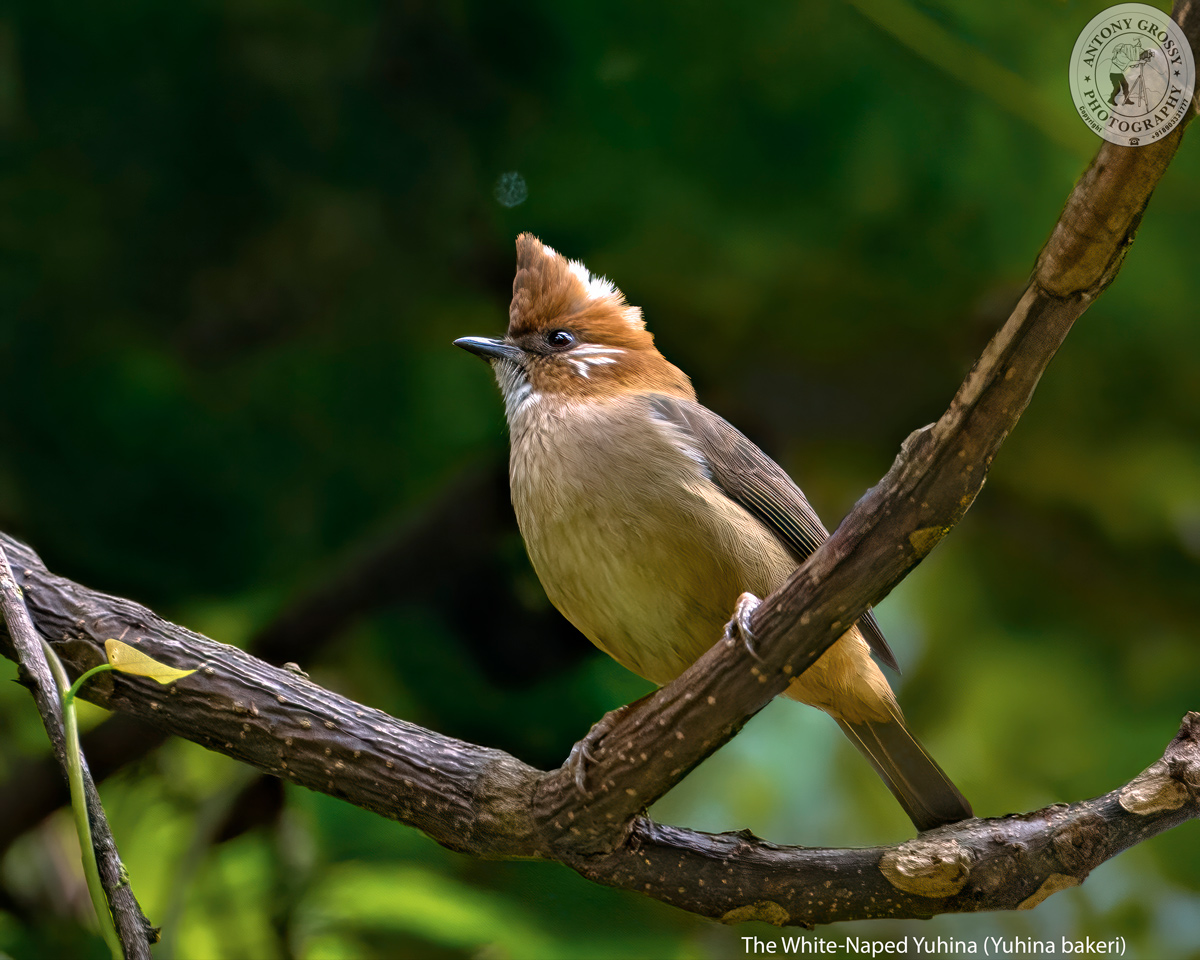

|
 |
| Canopy Dancer of Subtle Elegance – The White-Naped Yuhina |
| The White-Naped Yuhina is an exquisite Yuhina sports a dark brown wings and tail accented with pale edges and a blackish-brown bill, its most prominent feature is undoubtedly the white band of feathers gracing its neck. With an orange head and crest with white ears and throat. Nape is not obviously pale, but the white trim to the back edge of the crest is noticeable. They boast a charmingly fluffy demeanour and forages in broadleaf forests from lower foothills up to montane areas. Social and often seen in large flocks, occasionally with other species, it is primarily a canopy dweller and difficult to spot. . . . . . . . . . . . …. ………….. ……………….. .. …. …. ……….. … …. ……….. … …. ………… ………….. ………… ………… ….. ………. …………. …….. ……………. …… …. …. ……….. … …. ……….. .. ………… ….. ………. …………. …….. ……………. … The White-Naped Yuhina is a relatively stout-billed Yuhina with rufescent-brown head, white nape and throat, silvery-streaked ear-coverts, strong crest. It measures between 12 to 13.5 cm in length and weighs about 14 to 24 gms. Its crown, lower nape, neck side and mantle are dull rufous-brown, feathers of crown elongate and erectile, upper nape broadly white-tipped; upperparts drab mid-brown with dark greyish-olive cast, upperwing and tail browner; lores blackish-brown, ear-coverts plain rufous-brown with broad silvery-whitish streaks, area under eye as crown, submoustachial as crown with whitish flecks; chin and throat whitish with very vague dark marks, merging to slightly pinkish-tinged buff with vague long dark streaks on breast, flanks drab buffish-olive, central belly whitish, lower belly, thighs and undertail-coverts yellowish-tan; iris reddish-brown to yellowish-brown; bill dark brown to black; legs dull olivaceous to brown. Both Sexes are similar. Juvenile has mantle browner, underparts paler with streaks less distinct. . . . . . . . . . . . …. ………….. ……………….. .. …. …. ……….. … …. ……….. … …. ………… ………….. ………… ………… ….. ………. …………. …….. ……………. …… …. …. ……….. … …. ……….. .. ………… ….. ………. …………. …….. ……………. … The White-Naped Yuhina is found from the Himalayas to Northern Myanmar. Its natural habitats are temperate forests and subtropical or tropical moist lowland forests. Found mostly in primary and secondary broadleaf evergreen forest, between 300 to 2200 mtrs. Resident; some seasonal altitudinal displacement. Given their preference for dense woodland habitats, these birds can be somewhat elusive for birdwatchers. To increase ones chances of observing a White-Naped Yuhina, one needs to stay vigilant for their songs and movement amidst the foliage. Since they tend to forage among large mixed-species flocks, a sighting of other bird species could signal the presence of a White-Naped Yuhina nearby. . . . . . . . . . . . …. ………….. ……………….. .. …. …. ……….. … …. ……….. … …. ………… ………….. ………… ………… ….. ………. …………. …….. ……………. …… …. …. ……….. … …. ……….. .. ………… ….. ………. …………. …….. ……………. … Insects make up most of their diet; however, they’ve also been observed munching on fruits and seeds. It eats beetles, wasps and other insects, berries, flower nectar, seeds and sugar-rich sap from bark. It is usually found in small parties, often in association with mixed feeding flocks which may contain other small babblers. They usually forage while integrated within mixed-species flocks as they actively scour tree branches and leaves to find their next meal. Forages in treetops and bushes. It favours dense foliage for secure foraging. . . . . . . . . . . . …. ………….. ……………….. .. …. …. ……….. … …. ……….. … …. ………… ………….. ………… ………… ….. ………. …………. …….. ……………. …… …. …. ……….. … …. ……….. .. ………… ….. ………. …………. …….. ……………. … Possible song a hurried series of high thin notes repeated every 1 to 3 seconds, tsutsutsu or dududu, tsutst, and tsutsutsut, etc. Calls include very thin, piercing, high-pitched, short, metallic notes, e.g. tsit, sit-sit ( ), tssu and tsidit, also a slightly falling seep; also séét-chuut!, second note harsh and much lower, reminiscent of common note of The Whiskered Yuhina but much less guttural. . . . . . . . . . . . . . . . . . . . . . . . . . . . . . . . . . . . . . . . . . . . . . . . . . . …………………….. ………………………………………………………………… ………………………………………………………………………………………………………………………………………………………………………………………….. ………………………………. .. ……… …… … …. ……….. Description Credit Birds of the World (The Cornell Lab), Oiseaux, Birda, Animalia, Nepal Desk, Ogaclicks, Birds of India | Bird World, Bird Count India & Wiki. |
  |
|
|






































































































































































































































































































































































































































































































































































































































































